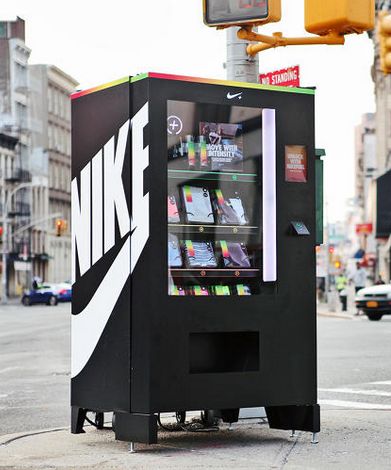Ever seen a vending machine?
I bet you did unless you’re an alien from another planet who is visiting earth or have time traveled to the future from the 1850s.
There is one in a billion chances of occurrence of either of the above-mentioned scenarios so let us assume you have seen a vending machine once in your lifetime. But counting the odds, if you have not, here is what they look like:

Vending machines, as we know them, have a fairly simple operation procedure. From a list of items it has to offer, you choose what you want, insert the requisite amount for the item and the machine releases that item for you to revel. Pretty simple.
Now let’s consider another scenario. This time let us take the example of patent services industry. Consider that you’re a client and you need to get a Freedom to operate/ Invalidity/ patentability search performed. In fact, any search based on your need. You reach out to a consultancy, mention your requirements and seek their help in finding results based on the type of the search.
For instance, for an invalidity/validity search, you might request existing prior art that might deem a patent invalid. For categorization, you might request bucketing of patents from your portfolio.
You request the service, get the request fulfilled and pay for the same.
If you observe closely, both the scenarios appear to have some sort of correlation.
In reality, the current scenario in patent services industry has become such that the services provided by consultancies have become much more of a vending machine approach.
You only get what you pay for- is the reality of the day.
Is there something wrong with that approach?
Yes.
Though you get the service you asked for, it need not be stressed enough that exploring patent data can reveal a lot of insights, which could help you gain an advantage. The insights could be of any form and can vary based on the purpose of the search undertaken.
But the convention is that majority of the consultancies do not convey these insights along with the search results/reports. Those insights, even if discovered by researchers, are normally not sent across to the client, which though not unethical, is not a great practice by any means.
In some sense, providing a required service without any additional insights/observations pretty much classifies as a vending machine approach.
We at GreyB know that client service is not just a marketing jargon and often go the extra mile to achieve client satisfaction. Helping clients leverage on insights does not just help retain them, but also conform to our standards.
Setting high standards and meeting them is the way of life at GreyB. We were recently reminded about the same in one of the internal emails by Deepak, Director at GreyB to the team.
Before I divulge the content of the mail, let me give you a brief background.
Recently, we undertook a project where we were supposed to categorize the patent portfolio of the client and bucket patents into various technology cluster based on chosen taxonomy. What followed was the ideal to and fro containing interim reports, and updates to the project until an email arrived from Deepak.
Deepak asked the researchers whether there were any comments/insights that could be shared with the client in addition to the interim sheet constituting bucketing details of 600 patents. There weren’t any and the researcher mentioned that the following interim sheet was provided if the client needed an update.
Deepak wanted to get the gist straight and also wanted to remind the team the importance of sharing observations which could help the client’s make the best out of their portfolio and above all, help GreyB conform to its standards
Here is the mail from Deepak to his team.
My point was more on observations.
In landscape analysis, the most important thing is what observations are made while patents are getting categorized. This is not related to Taxonomy or how categorization will be done.
Most of the clients does not know what type of patents do they have. Sharing observations like:
- While we were doing categorizations we came across few patents which were very basic in nature OR
- We came across a patent which was filed in 1980 and is still active OR
- We came across few patents that had more than 200 forward citations OR
- We came across a patent that we believe is standard essential and we feel there may be more in the set OR
- We found a patent where Nick you were the inventor and it was something that we feel is currently used by Qualcomm
- We found few patents about technology that we believe is about to arrive in 2017/2018. These patents can become important one to watch.
There can be 100 more things like this that only a person who is categorizing can suggest.
These observations are not about statistics. Its purely about the things that are inside the patents, in their specifications, in their claims that are very difficult to spot otherwise.
The Client is not expecting this from you. If we don’t give this to him, he is not going to ask for it, neither he will mind.
But by our own standards, we will be below average.
Let us not forget, Setting high standards and Meeting them is not just a saying, but the way of life at GreyB.
Deepak
Curious to know how we think Internally? This is where you should look- Internal Email Archives




